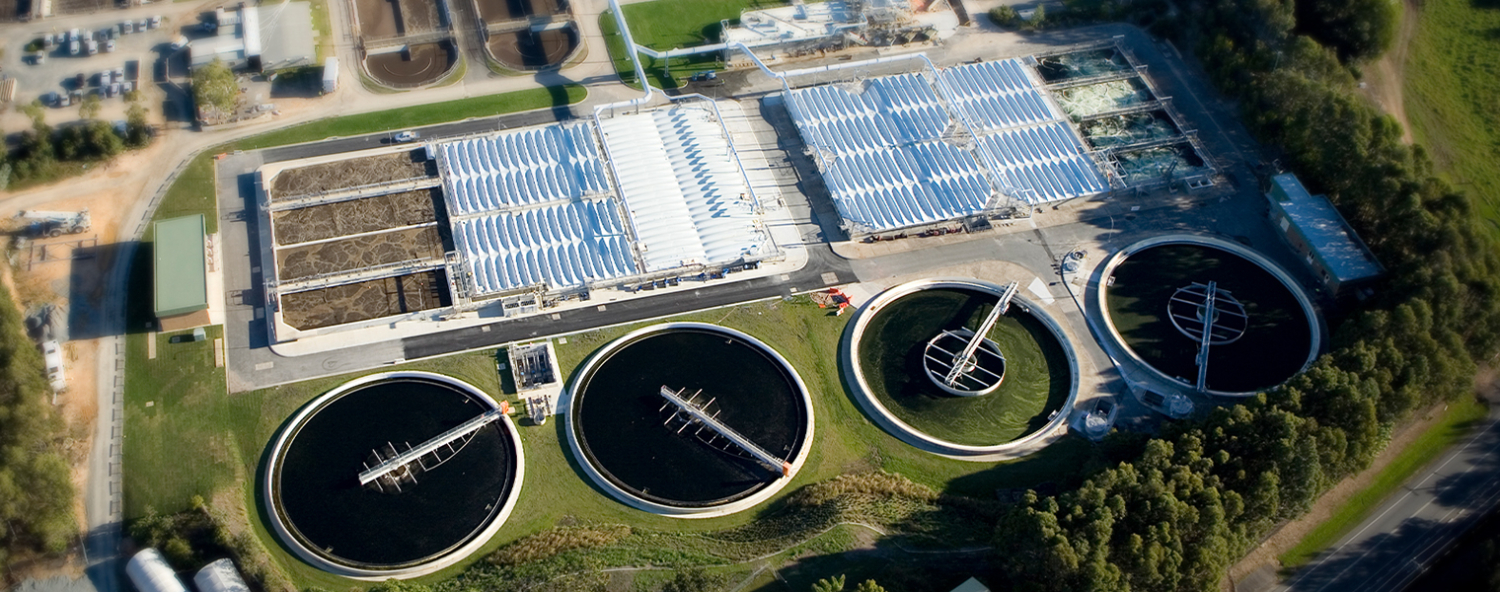
Municipal
Hydroflux Pacific is a sustainability driven organisation delivering unrivalled engineering, scientific and technological solutions for a more secure future, with a focus on water, wastewater, renewable energy, climate resilience and environmental protection.
Since 2017, we have been actively serving Pacific communities from our bases in Fiji and Papua New Guinea, with an dedication to ensuring their long-term well-being. We firmly believe in providing continuous support to municipalities, and as we expand our reach in the region, we prioritize close collaboration with our clients to deliver tailored and sustainable solutions.
Our team comprises experienced consultants, engineers, and technicians who work together to develop customised solutions that are both effective and sustainable. In our consulting divisions, we place particular emphasis on assisting communities with sustainability strategies, water stewardship, climate risk assessment, ESG reporting, and carbon accounting. We strongly believe that comprehending the challenges presented by climate change and water scarcity is crucial for constructing resilient and sustainable communities.
Our robust technological solutions are specifically designed to meet the unique demands of the Pacific region, and we have a proven track record of success in municipalities worldwide. As a part of the Hydroflux Group, we have developed a range of top-quality products for municipal water and wastewater treatment equipment, and we have established enduring partnerships with leading businesses across the globe.

At Hydroflux Pacific, we are deeply committed to promoting sustainable practices within the water and wastewater treatment industry. Our solutions are built with a long-term perspective, ensuring their ongoing effectiveness well into the future. By providing sustainable water and wastewater treatment solutions, we actively contribute to the preservation of our invaluable natural resources for the benefit of future generation.
To define your utility needs, peruse the tabs below, email us on [email protected] or give us a call on +679 7736950
Find out more
Hydroflux is an organization that has developed its own IP which compliments the businesses representation with several high-profile companies in the water and wastewater treatment industry. These companies are based in Australia, Europe, the Middle East and the USA and include Huber SE, Epco, Mena Water, Organics, Aerostrip, Flootech, Dutch Spiral, Aeromix, and Baur Folien GmbH.

Collectively, these companies offer a wide range of products and solutions for various aspects of water and wastewater treatment. Here is a general overview of the expertise and products offered by these companies:
Hydroflux IP: Hydroflux proprietary IP extends to the design and construction of Clarifiers, thickeners, DAF system, filtration and membrane systems, decentralised sewage treatment plants and biological processes including the HySmart SBR, MBR, trickling filters and activated sludge plants.
Huber SE: Huber specializes in providing innovative solutions for water, wastewater, and sludge treatment. Their product portfolio includes equipment and systems for screening, grit removal, sedimentation, sludge dewatering, sludge drying and more. All Huber products are fabricated under high quality controlled considtions in Germany
Organica: Organics offers advanced technologies for the treatment of organic waste and wastewater. Their solutions include anaerobic digestion systems, biogas utilization, and organic waste management systems.
Mena Water: Mena Water specializes in designing and constructing water and wastewater treatment plants. They provide turnkey solutions, including engineering, equipment supply, installation, and commissioning, tailored to the specific needs of each project.
Flootech: A FlooBed® MBBR is one of several types of aerobic biological wastewater treatment process that uses bacteria to consume organic matter in the presence of oxygen. The main difference between the FlooBed® MBBR and other conventional processes is that is uses small plastic carrier elements in the biological aeration vessel to provide a high surface area for bacteria to attach to and grow.
Dutch Spiral: Dutch Spiral is a company that specializes in the design and manufacturing of screw conveyors, also known as auger conveyors. Dutch Spiral screw conveyors are known for their high-quality construction and efficiency used in many solids handling applications in water and wastewater treatment plants.
Aeromix: Aeromix are world leaders in municipal and industrial wastewater treatment plant surface aeration and in lake aeration. Formed in the 1980’s, Aeromix began building the TORNADO®, its first aeration product. Today, Aeromix is recognized as an award-winning manufacturer of a complete product line of surface aerators for pure water and wastewater treatment and has more than 4,500 systems installed in over 75 countries worldwide.
Baur Folien GmbH: Baur Folien GmbH specializes in the production of geomembranes and geosynthetics. Their products are used for applications such as lining of ponds, reservoirs, and landfills, as well as for soil protection and erosion control.
Hydroflux IP: Hydroflux proprietary IP extends to the design and construction of Clarifiers, thickeners, DAF systems, HyPURE filtration and membrane systems, decentralised sewage treatment plants and biological processes including the HySmart SBR, MBR, trickling filters and activated sludge plants.
Processes and systems: Clarifiers and thickeners | DAF systems | Biological processes | HyPure Membrane
Clarifiers and thickeners:
Hydroflux Epco offers a variety of primary, secondary and tertiary clarifiers, lime saturators and sludge thickeners. All units are customised to suit different flow rates, treatment objectives, and space requirements.
- Proven bridge construction
- High torque heavy duty gearbox
- Elimination of dead zones
- High sludge thickening capability
- Proven sludge removal systems
- Free standing design in steel construction or concrete in ground designs
- Proven commissioning success drawing on 52 years of experience
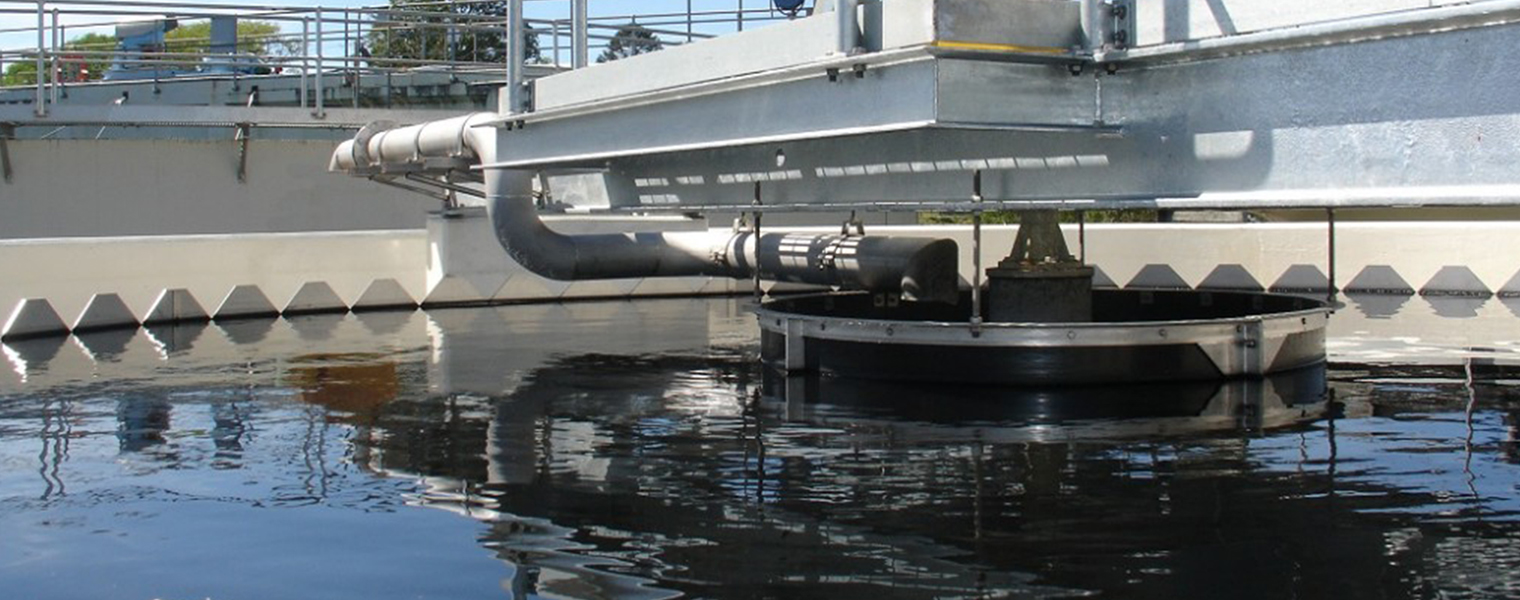
Back to topClick here to be diverted to Hydroflux Epco’s web site for more details.
DAF systems:
Hydroflux Pacific offers a diverse range of Dissolved Air Flotation (DAF) systems tailored to various applications, including municipalities, potable water treatment, waste activated sludge (WAS) processing, algae removal processes, and more.
These DAF systems, developed by Hydroflux, are meticulously designed to enhance the efficiency and effectiveness of the flotation process. They incorporate numerous advanced features such as fine bubble generation, improved solids separation, and intelligent control systems. These high-quality engineered systems are capable of efficiently removing solids from water and wastewater streams.
The standalone DAF systems manufactured by Hydroflux are constructed using stainless steel or other suitable materials. They have the capacity to handle flows of up to 300 kL/hr and solids loads of 5000 Kg/hr. Prior to implementation, each HyDAF system is scientifically modeled to ensure it surpasses all performance and operational expectations.
Whether your requirement involves wastewater treatment, waste activated sludge processing, integration with a biological treatment plant, thickening waste activated sludge, algae removal from surface water, or any other dissolved air flotation application, Hydroflux guarantees the design and construction of a Dissolved Air Flotation system specifically tailored to your unique needs.
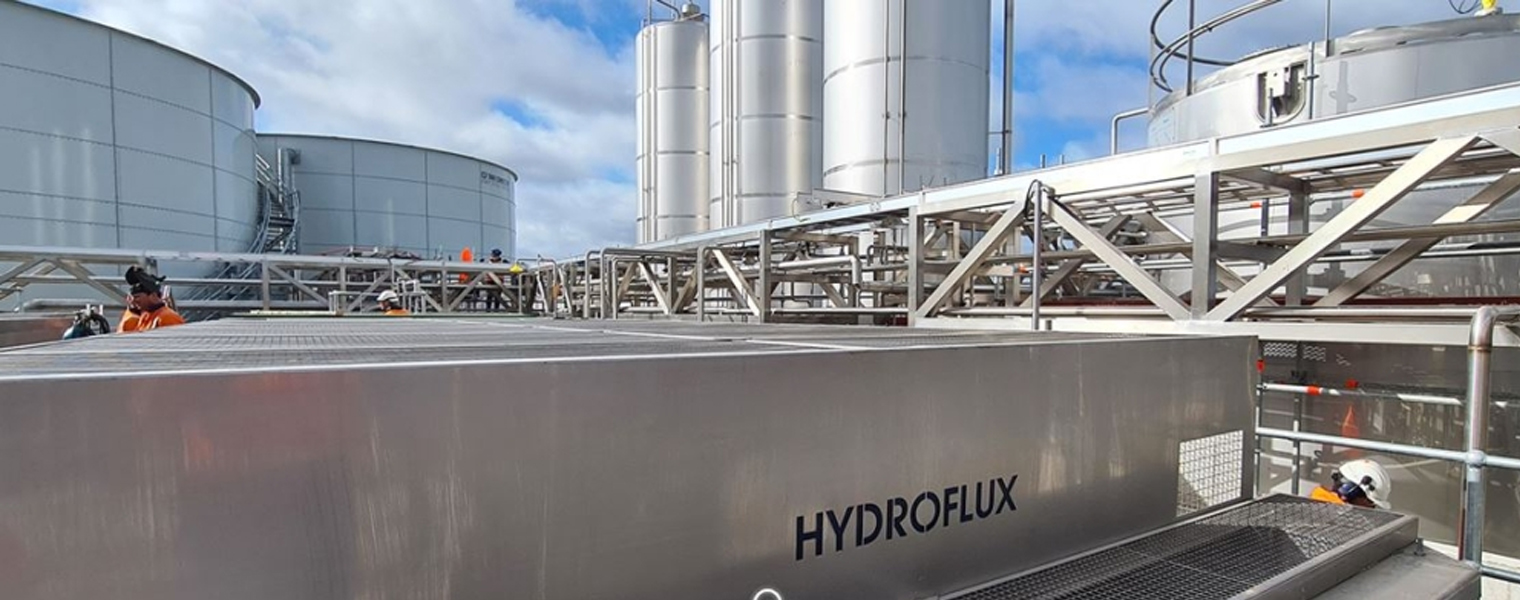
Back to topClick here to be diverted to Hydroflux Epco’s web site for more details.
Biological processes
Hydroflux actively engages in the design and construction of various biological treatment systems suitable for municipalities, specialising in customizing these processes to meet specific needs and requirements.
One of the oldest and simplest aerobic biological treatment processes is the rotary distributor or trickling filter, and Hydroflux Epco possesses over 60 years of design expertise in this area. They have implemented trickling filter mechanisms across the region, including the first installation in Goroko for the PNG Water Board in 1963. Whether it involves retrofitting or upgrading an existing plant or constructing a new one, Hydroflux Pacific is the sole Pacific-based organization with in-house designs and expertise to provide reliable trickling filter solutions.
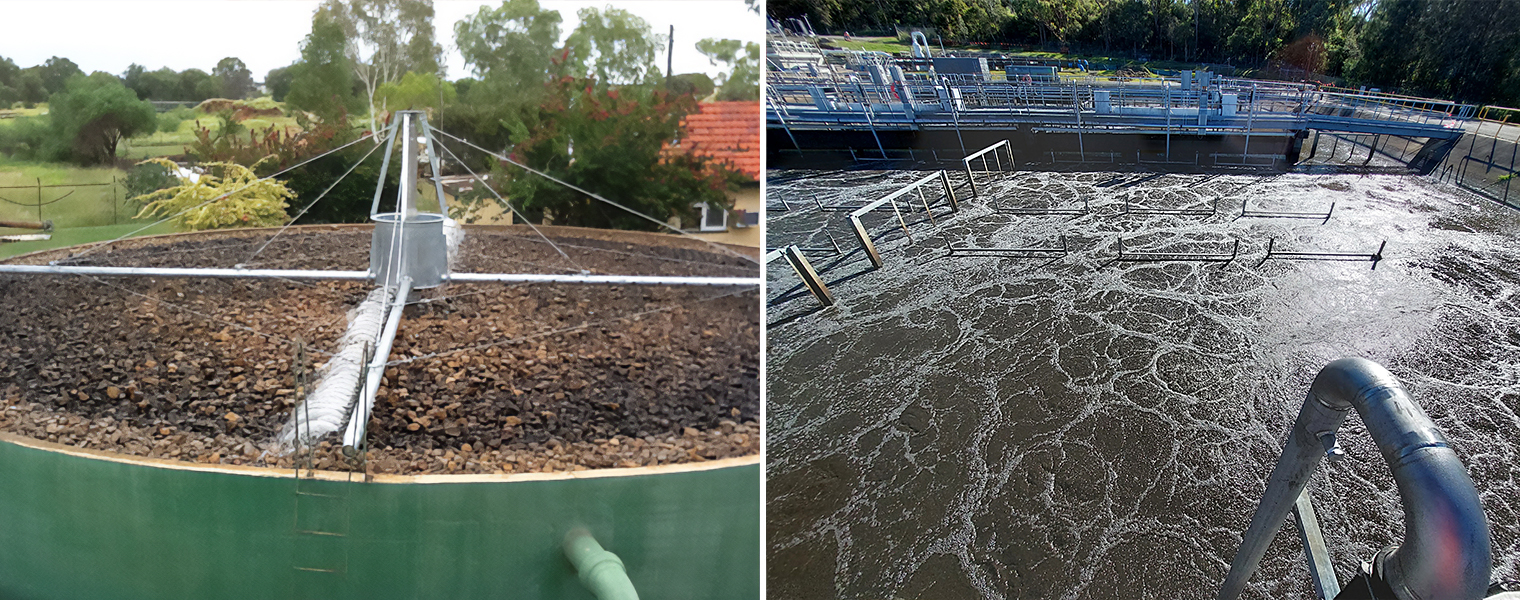
For more advanced wastewater treatment solutions, Hydroflux offers the Membrane Bioreactor (MBR), which combines the biological process of activated sludge with a membrane filtration system. By utilising high-quality flat sheet or hollow fiber membranes, this approach guarantees excellent effluent quality and a smaller system footprint compared to other aerobic treatment methods.
Hydroflux’s HySmart Sequential Batch Reactor (SBR) is another area of expertise. SBR systems consist of sequential stages: fill, react, settle, and decant. Each stage contributes to the treatment process, with aeration facilitating biological activity, settling allowing for biomass separation, and decanting ensuring the discharge of clarified effluent. Hydroflux’s proficiency in SBR systems enables the treatment of diverse types of wastewater and the attainment of high-quality effluent, combining nitrogen removal in a single tank.
Furthermore, Hydroflux is well-versed in designing and implementing conventional Activated Sludge systems. Their expertise in this widely used biological process ensures optimal performance, and tutilise clarifiers from the Hydroflux range for biomass separation.
Drawing on experience and expertise, Hydroflux ensures the design and construction of efficient and effective biological treatment systems for wastewater treatment. We collaborate closely with clients to tailor the processes to specific applications, taking into account wastewater characteristics, treatment goals, and desired effluent quality.
Back to topClick here to be diverted to Hydroflux Epco’s web site for more details.
HyPure Membrane
Membrane filtration is a highly utilised technology in water and wastewater treatment processes. Hydroflux has developed its own range of HyPURE products specifically designed to cater to a wide array of water and wastewater treatment applications. These products encompass different types of membrane filtration, including ultrafiltration (UF), nanofiltration (NF), and reverse osmosis (RO), each with its unique characteristics and applications.
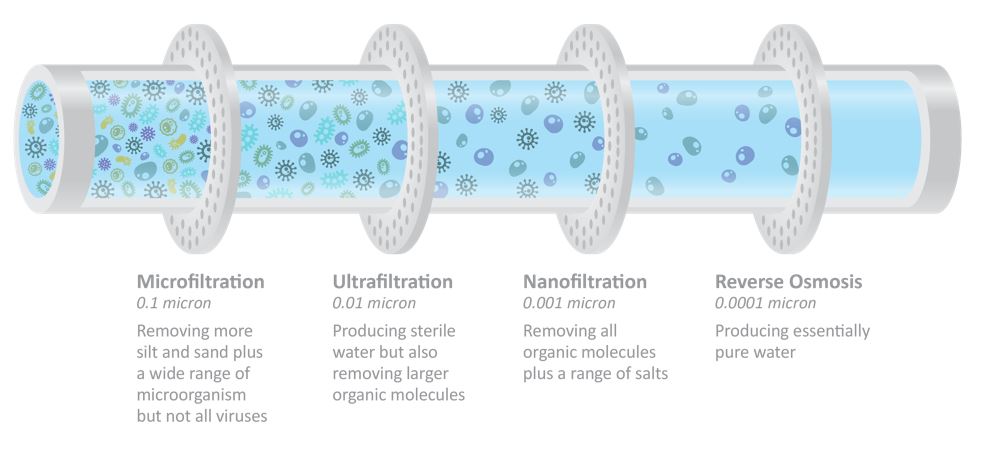
Ultrafiltration (UF) employs membranes with relatively larger pore sizes compared to other types. Typically ranging from 0.1 to 0.01 microns, UF membranes effectively remove suspended solids, bacteria, viruses, and certain macromolecules from water. UF is commonly employed as a pre-treatment step in water and wastewater treatment processes. It finds application in drinking water purification, as well as wastewater reclamation.
Nanofiltration (NF) is positioned between ultrafiltration and reverse osmosis in terms of pore size. NF membranes feature smaller pore sizes, usually ranging from 0.001 to 0.01 microns. These membranes effectively remove divalent ions, organic matter, and select monovalent ions from water. NF is frequently utilized for water softening, color removal, and the elimination of specific contaminants such as pesticides and pharmaceuticals in water treatment applications.
Reverse osmosis (RO) involves the use of membranes with extremely small pore sizes, typically between 0.0001 and 0.001 microns. RO membranes excel at removing dissolved salts, ions, and other contaminants from water. By applying pressure to overcome osmotic pressure, the process separates the solvent (water) from the solute (dissolved contaminants). RO is widely employed in desalination projects, effectively extracting freshwater from seawater or brackish water. It also serves as a reliable method for producing high-quality drinking water, purifying process water, and treating wastewater.
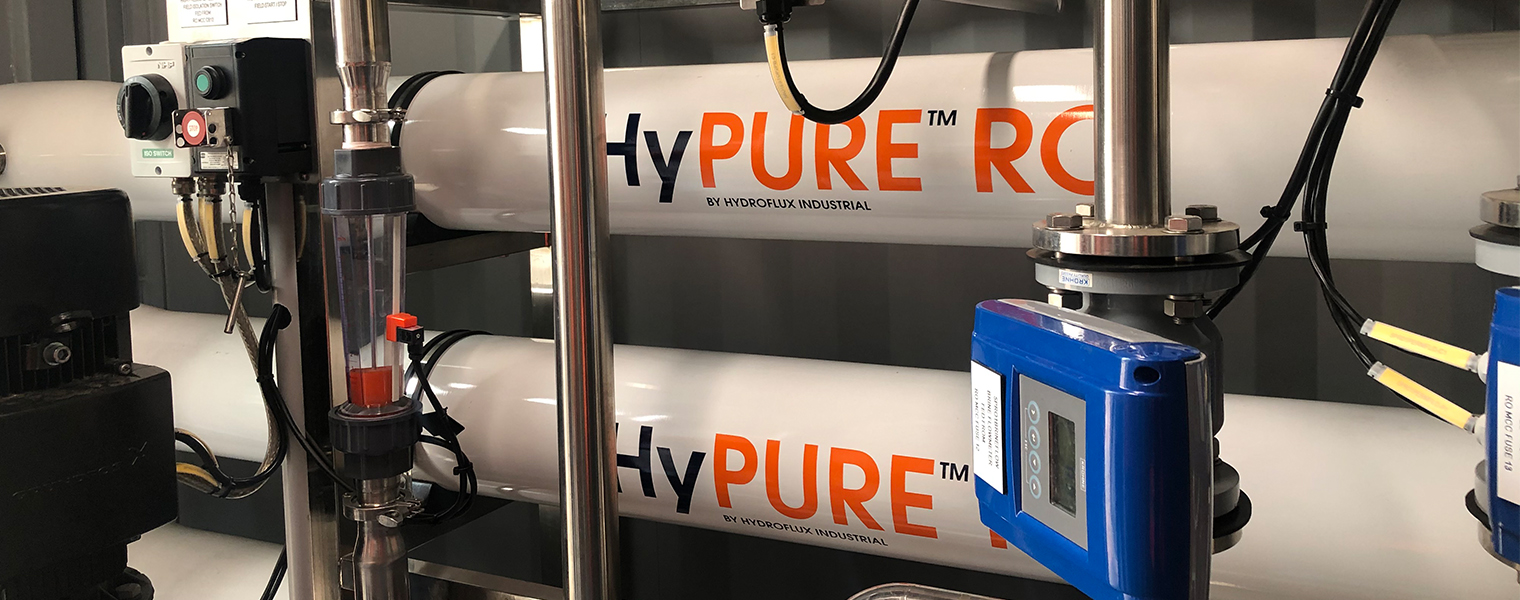
The selection of the most appropriate membrane filtration process depends on various factors, including specific water quality requirements, the nature and size of contaminants present, and the desired treatment objectives. Each process presents its own advantages, limitations, and considerations related to performance, cost, and operational requirements. Consulting with Hydroflux, renowned experts in membrane filtration systems, can provide valuable guidance in determining the most suitable technology for a particular application.
Back to topClick here to be diverted to Hydroflux Epco’s web site for more details.
Huber SE is a German company that specialises in providing innovative solutions for water, wastewater, and sludge treatment. They are primarily engaged in the development, manufacturing, and distribution of various products and systems from the headquarters in Munich, Germany.
For a brief summary of some of Huber’s key products please see below or click below to be diverted to Hydroflux Epco site for detailed information and case studies on all Huber products:
Screens | Screenings treatment | Grit separation and treatment | Sludge treatment
Screens
Huber SE offers a variety of screens designed for different applications in water and wastewater treatment. Some of the main types of Huber screens include:
1.Step Screens: These screens consist of multiple steps or bars that create a stair-like configuration commonly used in STP’s.
2.Drum Screens: Drum screens have rotating cylindrical screens that separate solids from the water as it flows through. They are suitable for fine screening and are commonly used in municipal and industrial wastewater treatment plants.
3.Disc Screens: Disc screens utilize rotating discs with perforated surfaces to separate solids from liquids. They are effective in removing fine solids and are often used in applications such as municipal sewage treatment and industrial processes.
4.Micro Screens: Micro screens are designed to remove very fine particles from the water stream. They typically use woven mesh or synthetic membranes to achieve high separation efficiency, making them ideal for applications that require fine filtration.
5.Band Screens: Band screens consist of perforated panels or filter belts that continuously move to separate solids from the liquid. They are commonly used for coarse and fine screening in various wastewater treatment processes.
6.Screenings Wash Presses: These devices are used to dewater and compact the collected screenings from the screening process. They squeeze out water from the screenings, reducing their volume and facilitating their disposal.
These are just a few examples of the different types of Huber screens available, each designed to suit specific requirements and provide efficient solids separation in water and wastewater treatment applications.
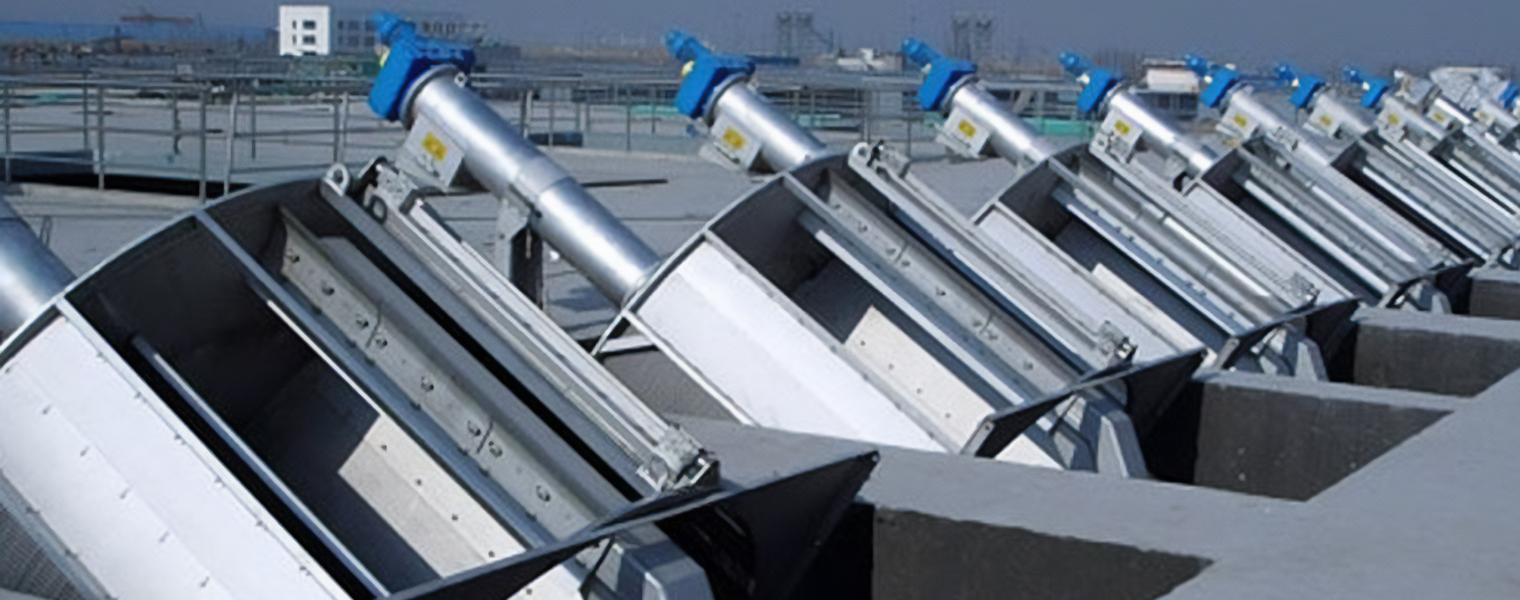
Screenings treatment
Huber’s screenings treatment solutions are designed to effectively remove, wash, compact, and dewater the screenings, ensuring proper disposal or further treatment. These solutions offer several benefits, including:
1.Screening Removal: Huber offers a range of screens and compactors to efficiently remove screenings from wastewater. Their screens are designed to effectively capture and separate solid debris, such as rags, plastics, and other coarse materials.
2.Screenings Washing: Huber’s screenings treatment solutions include equipment for washing the captured screenings. This process helps remove organic matter, reduce odors, and improve the quality of the separated solids.
3.Screenings Compaction: Huber provides compactors that compress and reduce the volume of the washed screenings. By compacting the screenings, transportation and disposal costs are minimized.
4.Screenings Dewatering: Huber offers dewatering solutions to further reduce the moisture content of the screenings. By removing excess water, the volume and weight of the screenings are further reduced, facilitating efficient and cost-effective disposal or resource recovery.
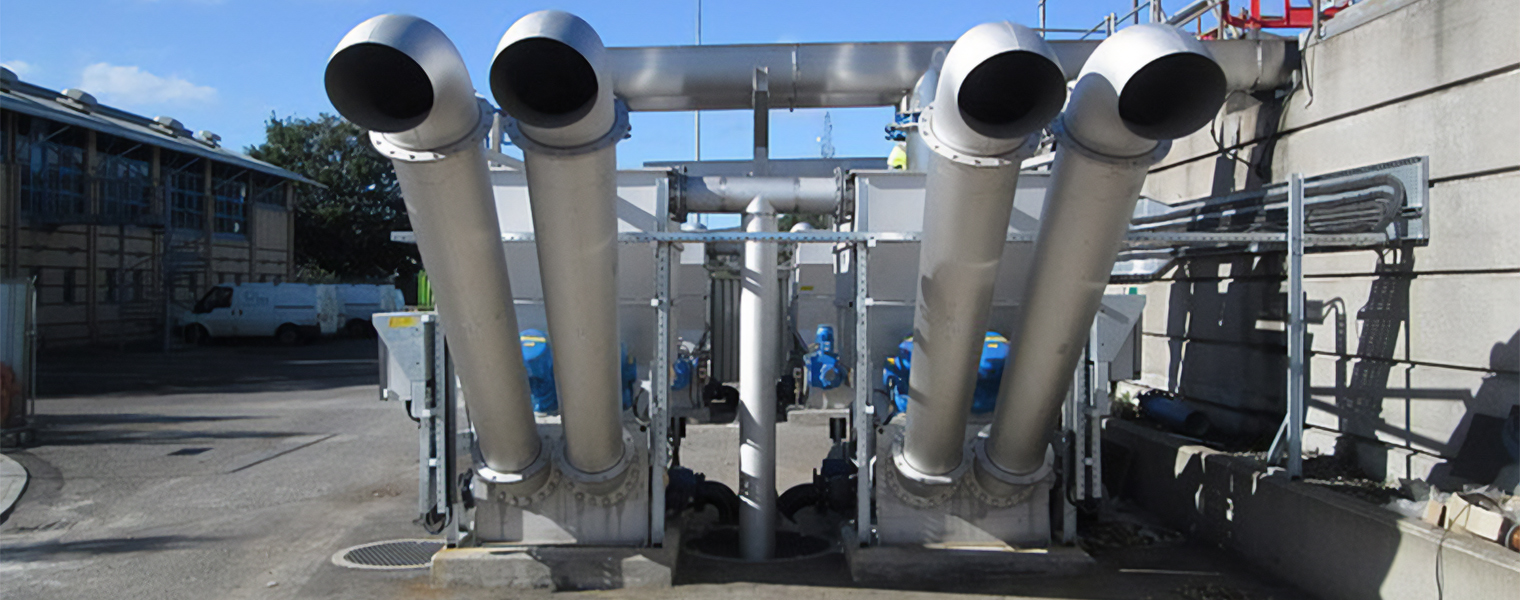
Grit separation and treatment
Huber’s grit separation systems are designed to efficiently separate and classify grit, ensuring clean water and protecting downstream processes. These systems incorporate various technologies and components to achieve optimal performance.
One key component is the grit chamber, which is specifically designed to facilitate the settling and separation of grit from the wastewater. These chambers are engineered to optimize sedimentation, allowing heavy particles like grit to settle to the bottom for removal. This ensures that the wastewater entering the downstream processes is free from abrasive and damaging grit particles.
To further enhance the quality of the separated grit, Huber utilizes grit washers. These washers are responsible for cleaning and washing the grit, removing organic matter and other contaminants that may be present. By effectively removing fecal material and other impurities, the grit is improved in quality and unpleasant odors are reduced.
Grit classifiers are another essential component of Huber’s grit separation systems. These classifiers play a crucial role in classifying and separating the grit particles based on their size and specific gravity. By accurately classifying the grit, only the desired particles are retained, while lighter or smaller particles are discharged. This ensures that the grit being processed and further treated is of the desired composition, optimizing downstream processes.
Huber offers comprehensive grit removal systems that integrate multiple components, including chambers, washers, and classifiers. These systems provide a complete solution for efficient grit separation and treatment. By combining these components into a cohesive system, Huber ensures that the grit removal process is optimized for maximum performance, resulting in clean water and protection of downstream processes.
Overall, Huber’s grit separation systems employ advanced technologies and components to effectively separate and treat grit, ensuring the purity of water and safeguarding the integrity of subsequent processes. By utilizing these systems, wastewater treatment plants can achieve efficient grit removal and enhance the overall performance of their treatment operations.
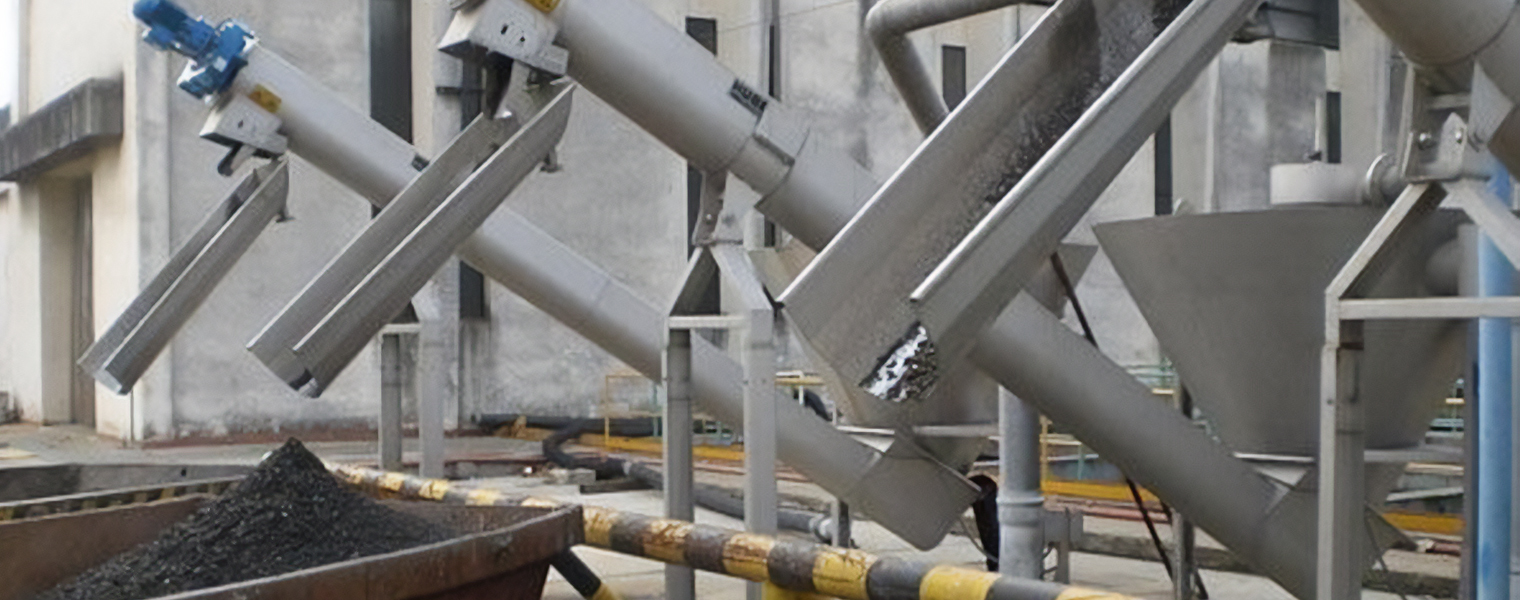
Sludge treatment
Huber’s sludge treatment systems are at the forefront of innovation, incorporating advanced technologies to address various aspects of sludge management, including thickening, dewatering, drying, and disposal.
For waste activated sludge thickening, the HUBER ROTAMAT® Screw Thickener RoS 2 offers exceptional performance and efficiency. This compact and fully enclosed system boasts low operational costs, reliability, and requires minimal operator attention. The RoS 2 is suitable for sludge flows up to 80 kL/hr. Additionally, for smaller municipal applications, the disc thickener provides an excellent solution. It is an enclosed vessel, slightly inclined, utilizing a slowly rotating filter disc covered with a filter cloth to separate flocculated sludge from filtrate.
The HUBER screw press stands out as one of the best sludge dewatering machines available globally, with over 3000 units in operation. These units are designed with low maintenance requirements, and one of their key features is the slow operational speed. The basket and screw rotate at less than 1.5 rpm, minimizing wear and prolonging their life and service. The screw press is capable of dewatering 20 – 540 kg/hr of sludge in a single machine, providing efficient and reliable dewatering performance.
Meeting regulatory requirements for sewage sludge treatment and disposal often necessitates the drying of sludge to reduce pathogen levels and ensure compliance with required standards before disposal or reuse. Huber offers a comprehensive range of drying solutions, including medium temperature belt dryers, rotary disc dryers, and solar drying systems.
To complement the sludge treatment range, the Huber strain press is an efficient and reliable sludge screening solution. It effectively removes disturbing solids, such as plastics, hair, and fibers, to prevent disruption of subsequent sludge treatment processes and equipment.
Huber’s sludge treatment systems incorporate cutting-edge technologies to provide efficient, reliable, and cost-effective solutions for sludge thickening, dewatering, drying, and screening. By implementing these advanced systems, wastewater treatment plants can effectively manage sludge and meet regulatory requirements while optimizing their operational efficiency.
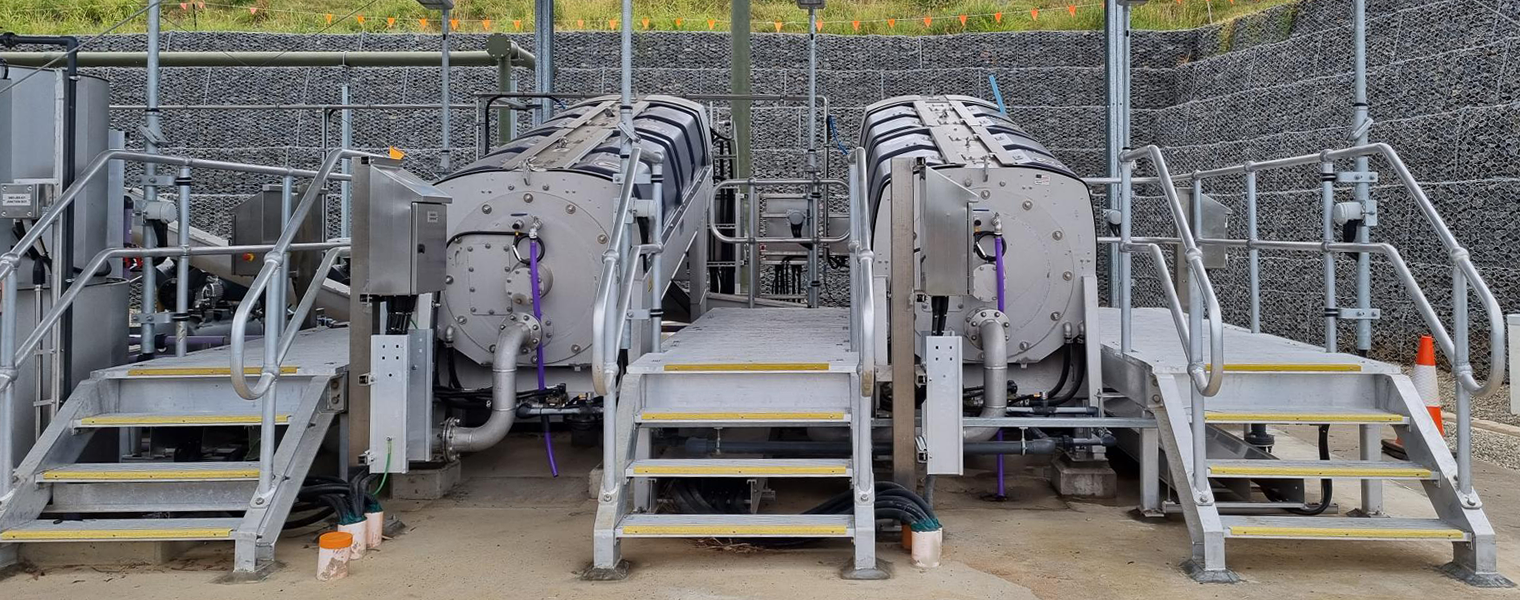
Organica is a natural treatment system combining conventional wastewater treatment technology with a botanic ecosystem. Organica uses plant roots that grow into the effluent encouraging bacteria and living organisms to develop. This creates a completely natural form of treatment providing significant reductions in space, energy use and operating costs.
An Organica plant is designed to look like a greenhouse or garden

Organica is a natural treatment system combining conventional wastewater treatment technology with a botanic ecosystem. Organica uses plant roots that grow into the effluent encouraging bacteria and living organisms to develop. This creates a completely natural form of treatment providing significant reductions in space, energy use and operating costs.
An Organica plant is designed to look like a greenhouse or garden
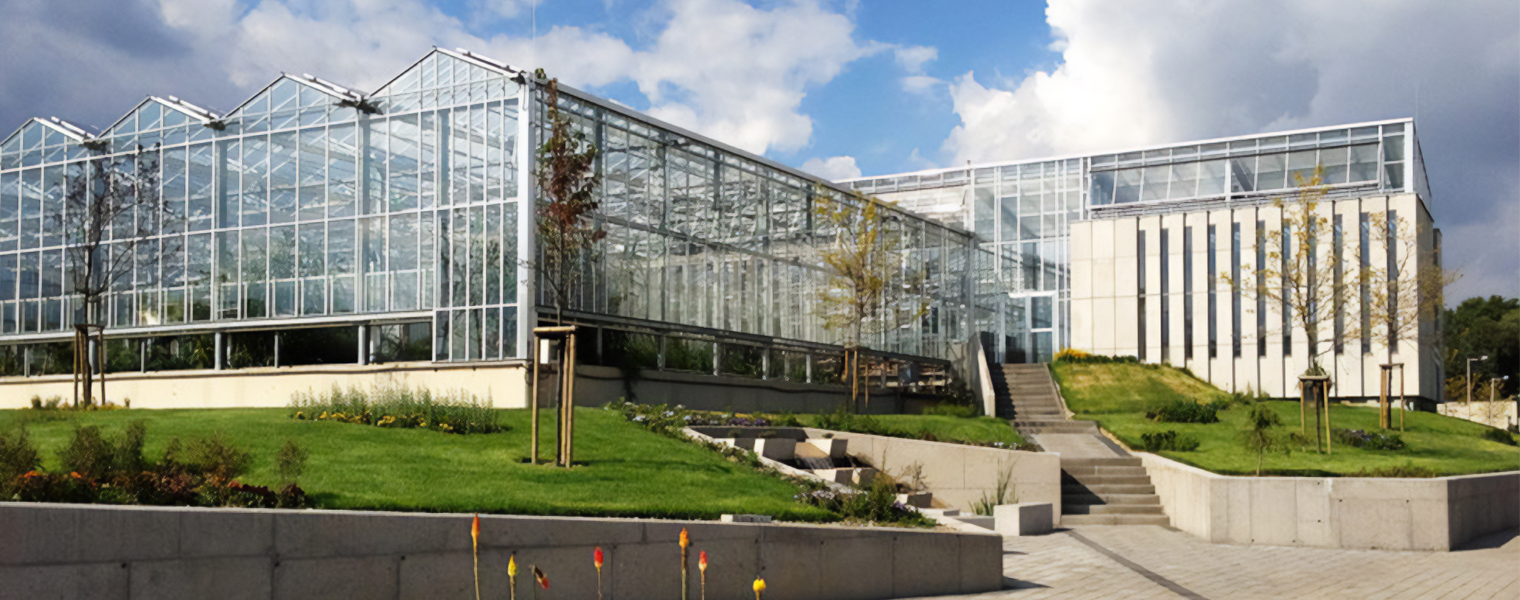
For more information click here
The unique HyPURE® NX hollow fibre nanofiltration cross flow modules are one of the range of HyPURE® emenrbane systems that include MF, UF , RO and multimedia filrtation plants. The HyPURE® NX system is a spiral wound designs and offers new opportunities for water reuse, potable, and process water treatment.
HyPURE® NX uses direct nanofiltration hollow fibre membranes that can remove organics, hardness, micro-pollutants, colour, medical residues, PFAS and endocrine disruptors from contaminated water streams.
Unlike RO systems, HyPURE® NX does not target the rejection of dissolved inorganic salts and will often achieve a suitable water quality for discharge or high-quality reuse, without the challenges associated with the production and costly disposal of a concentrated salt or brine stream.
Some of the key features of the HyPURE® NX are:
- As compared to UF, less or no chemicals are required in the pre-treatment phase
- Higher log reduction values of bacteria and viruses with the ability for integrity testing
- Removal of nano plastics, pharma by-products, insecticides, colour and selective salts
- Low fouling
- High chlorine tolerance
- Back-washable when compared to spiral wound nano filtration
- Green chemistry – unique water based chemistry is applied in the manufacture of the membranes
- Proven in numerous installations around the world
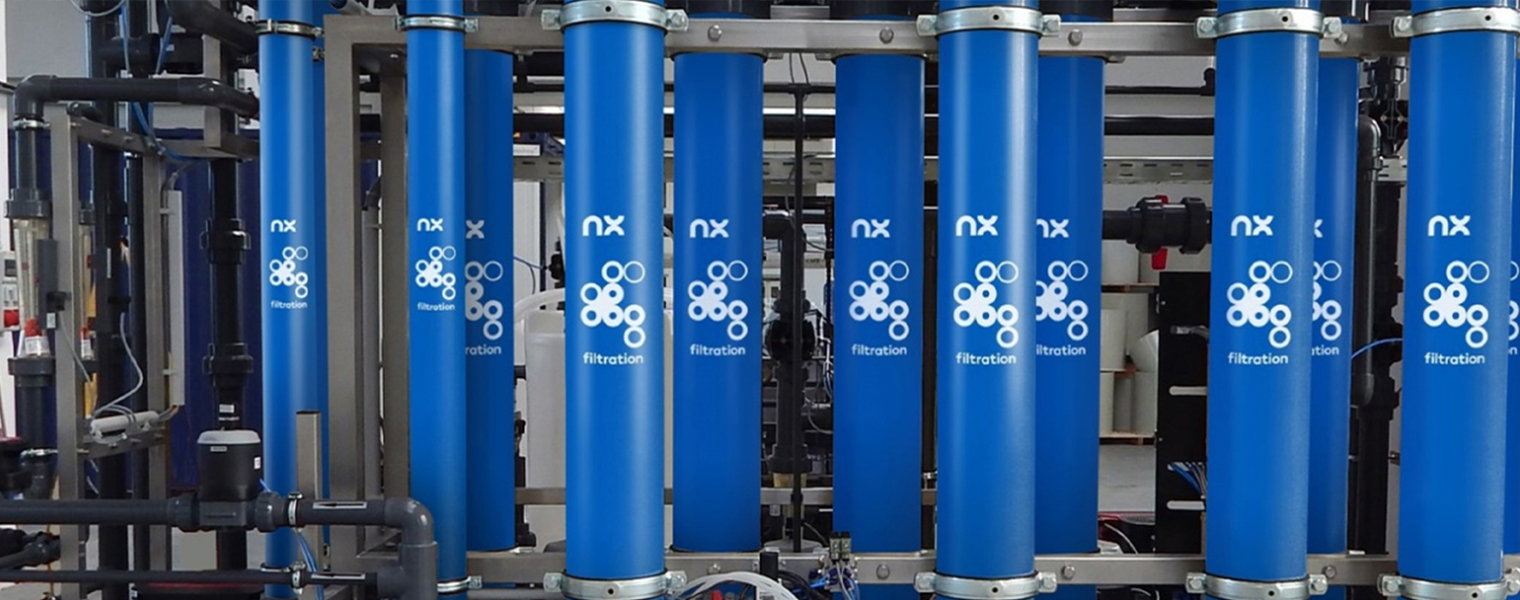
For more information click below to be diverted to Hydroflux Epco site
Hydroflux can supply a range of biogas treatment systems that are engineered to maximise the recovery and utilisation of biogas and will typically comprise:
- Biogas Flares
- Biogas Blowers
- Biogas Chilling & Biogas Skids
- Biogas Scrubbing
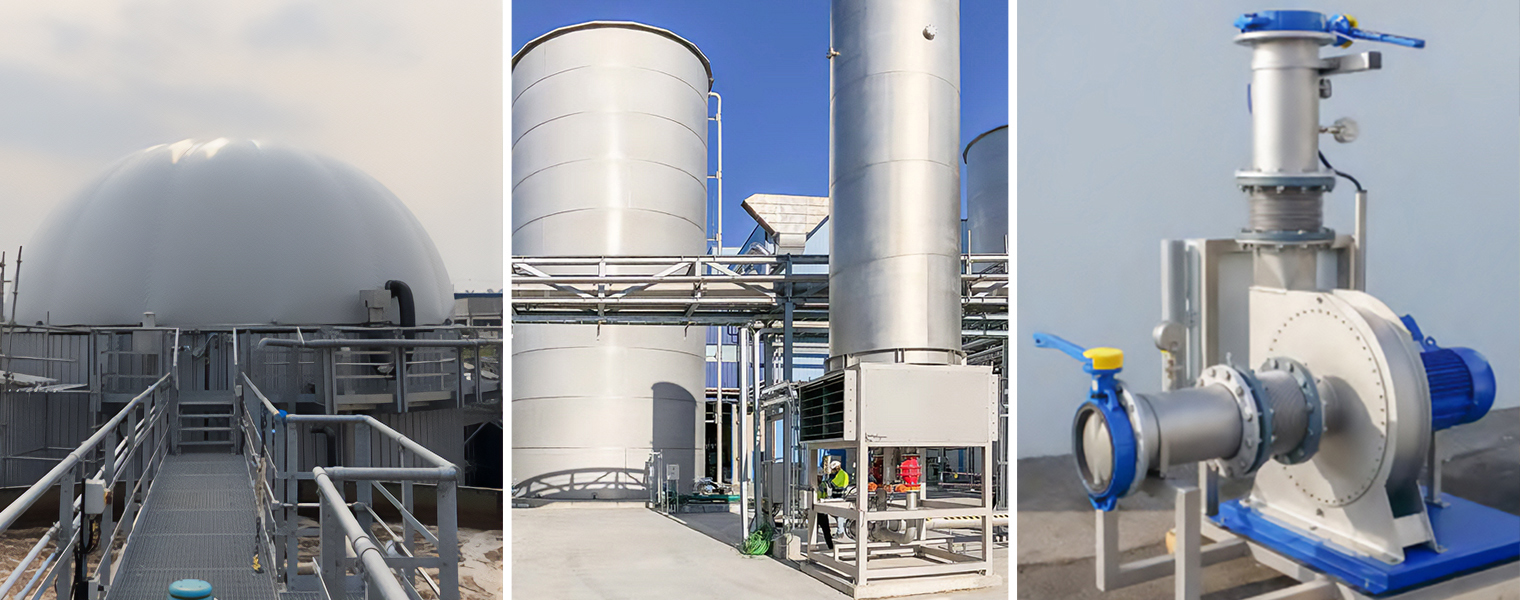
Hydroflux supply a range of high-quality biogas equipment including flares, blowers, chillers and scrubbing systems
Biogas Equipment: Biogas Flares | Biogas Blowers | Biogas Chilling & Biogas Skids | Biogas Scrubbing
Biogas Flares
The Hydroflux range of biogas flares is designed to safely burn off biogas generated from organic waste during anaerobic digestion processes when it is not being processed and used as an energy source. By utilising our flares, you can effectively manage and control biogas emissions while ensuring compliance with environmental regulations.
Each biogas flare in our range is equipped with a burner assembly, pilot flame, and flame arrestor. We prioritise quality and compliance with industry standards, ensuring that our flares meet the necessary safety and performance requirements. Our flares are specifically designed to handle varying volumes and compositions of biogas, providing efficient and reliable combustion for all industrial applications.
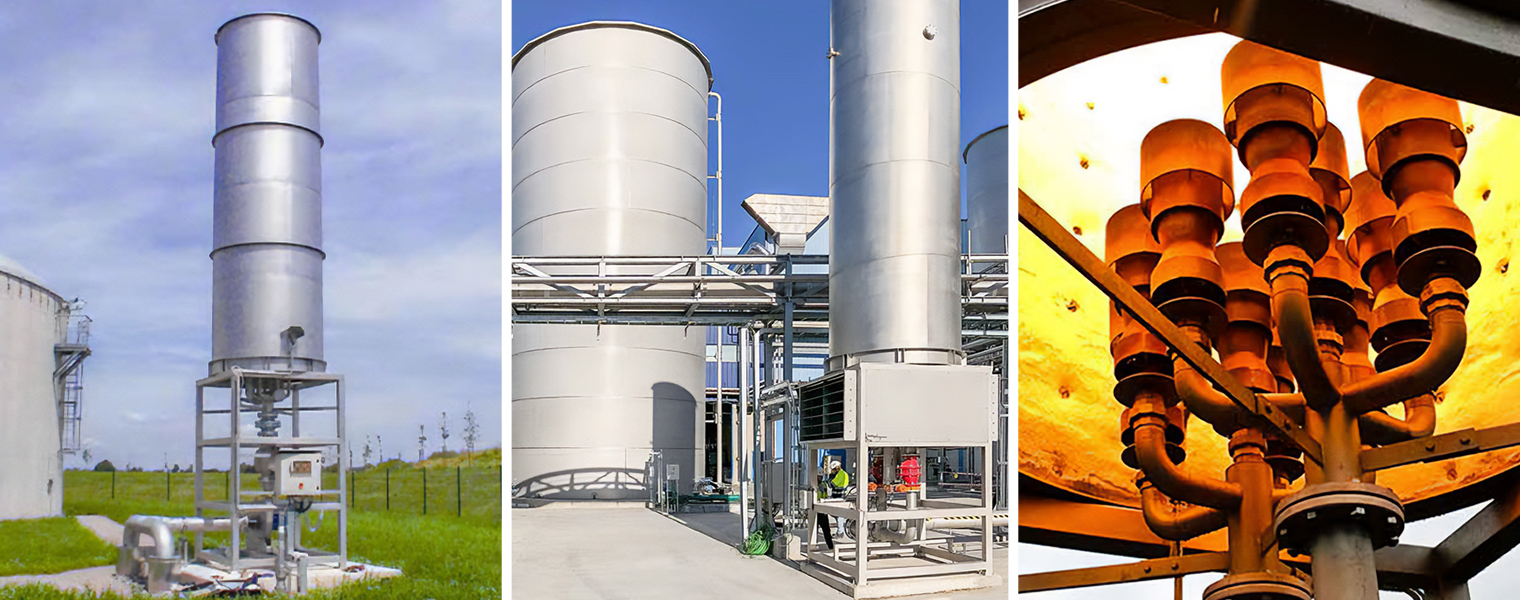
Hydroflux provide flares to suit any industrial biogas application
Biogas Blowers
Biogas blowers, also known as gas blowers or biogas compressors, are devices specifically designed to handle the compression and movement of biogas. The primary function of biogas blowers is to increase the pressure of the biogas, allowing for its efficient transportation, storage, or utilisation. These blowers help overcome the natural low-pressure characteristics of biogas, enabling it to be effectively delivered to various downstream applications.
When selecting a biogas blower, it is essential to consider factors such as reliability, energy efficiency, and compatibility with the specific biogas composition. Hydroflux has access to a comprehensive range of blowers, including the specialised Himmel GVD Biogas blower, designed for operation with wet biogas.
Whether you need a blower for a small-scale biogas system or a larger industrial application, Hydroflux can provide the right solution. With a focus on reliability, energy efficiency, and compatibility with different biogas compositions.
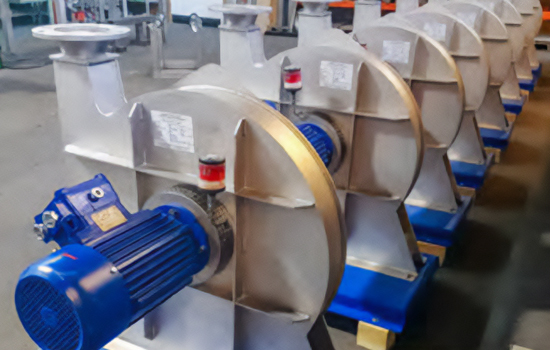
Hydroflux has access to a comprehensive range of blowers, including the specialised Himmel GVD Biogas blower, designed for operation with wet biogas.
Biogas Chilling (Moisture removal) and Biogas Skids (Moisture removal and gas pressure boosting)
Digester produced biogas is 100% water saturated and as it cools in the lines to the point of reuse, large amounts of water can condense in the piping system and the combustion device.
There are multiple benefits in drying biogas to a low dew point before combustion in a combined heat and power (CHP) engine or boiler. Hydroflux can incorporate the most suitable biogas cooling and collection system into the treatment process. These can be offered with or without compressors for gas pressure boosting.
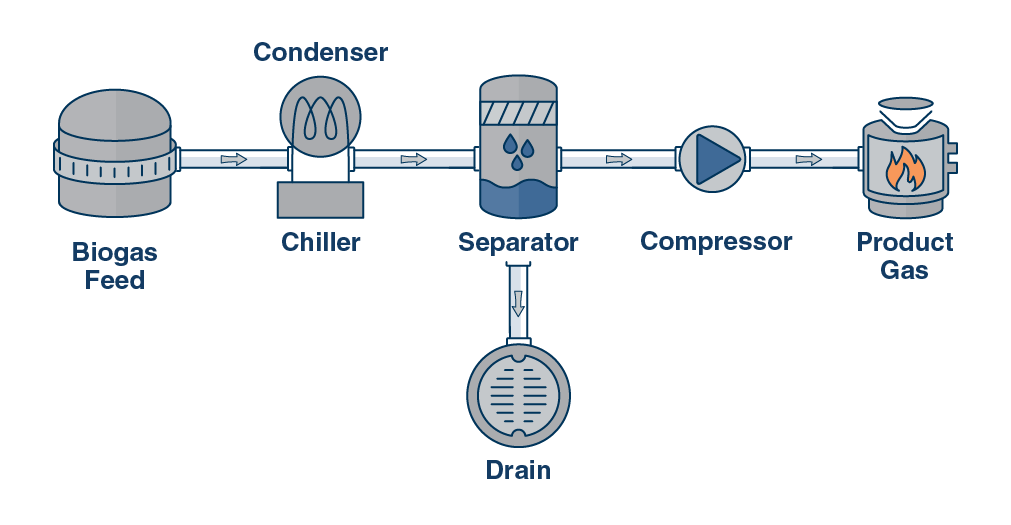
Some of the benefits of working with Hydroflux to design and provide biogas chilling and moisture removal systems include:
- Increased engine/boiler efficiency
- Prevention of corrosion/oil contamination
- Partial removal of impurities such as H2S, ammonia and siloxanes
- Complying with technical instruction of gas engine/boiler suppliers
Biogas Scrubbing (Desulphurisation)
Hydroflux specialises in providing top-quality scrubbers to enhance the purification and usability of biogas, ensuring compliance with industry standards and environmental regulations.
Our biogas scrubbers are designed to remove impurities and contaminants, such as hydrogen sulfide (H2S), moisture, siloxanes, and carbon dioxide (CO2), from biogas generated through anaerobic digestion. By employing advanced technologies and proven methodologies, we offer efficient and reliable solutions for upgrading biogas to a higher purity level.
Our team of experts will work closely with you to assess your biogas composition, determine the optimal scrubbing techniques, and customise a solution that fits your biogas plant setup. We offer a range of scrubbing methods, including biological desulfurisation, chemical scrubbing, adsorption, condensation, membrane separation, and more, ensuring we can deliver the most suitable and cost-effective solution for your needs.
Our scrubbers are manufactured using high-quality materials and adhere to stringent industry standards, ensuring long-lasting performance and minimal maintenance requirements.
Hydroflux has partnered with Baur Folien GmbH based in Germany, a market leader and specialists in the selection, design, supply, manufacture, and installation of high-quality gas storage equipment to maximise the product reliability whilst reducing the project lifecycle costs.
Biogas storage systems are suitable for:
- Biowaste
- Food Waste
- OFMSW AD (Organic Fraction of Municipal Solid Waste)
- Sewage gas for industrial WWTP
- Landfill gas
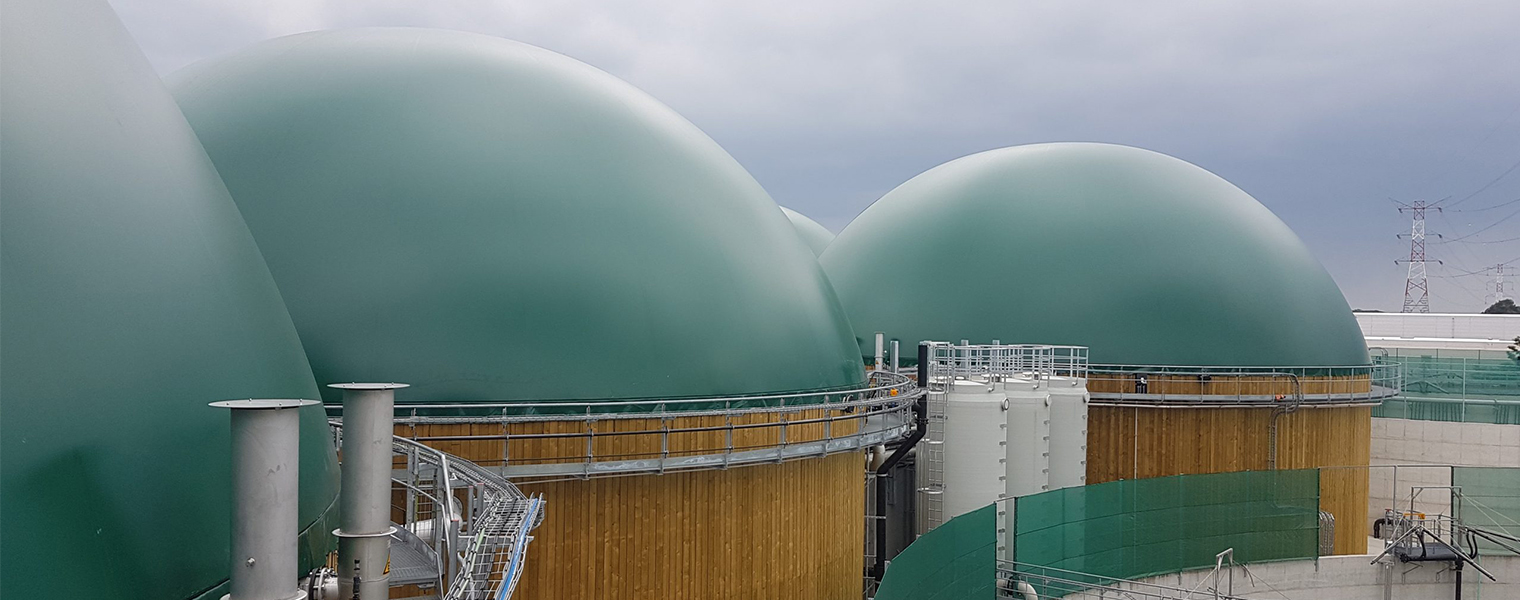
Baur Folien GmbH has been providing customers with customised solutions for over 30 years with a record of up to 9.000 successfully implemented projects worldwide.
Gas Storage for Industry
Double membrane gas storage systems represent the cutting-edge technology in biogas storage. These systems are highly robust and durable, capable of storing variable amounts of gas while maintaining a constant pressure.
The outer layer of the system consists of a weather protection foil, which effectively shields the integrated inner gas storage foil from wind and rain. This protective barrier ensures the longevity of the gas storage membrane, enabling it to provide extended service life. The use of high-quality materials enhances chemical resistance and minimises diffusion rates, even under higher operating pressures.
Double membrane gas storage systems can be installed on various structures, including in-situ concrete, precast, or suitable steel tanks. The flexibility of the gas storage membrane allows it to adapt to the gas production levels. Additionally, the shape and colour of the gas storage covers can be customised to meet specific requirements and customer preferences.
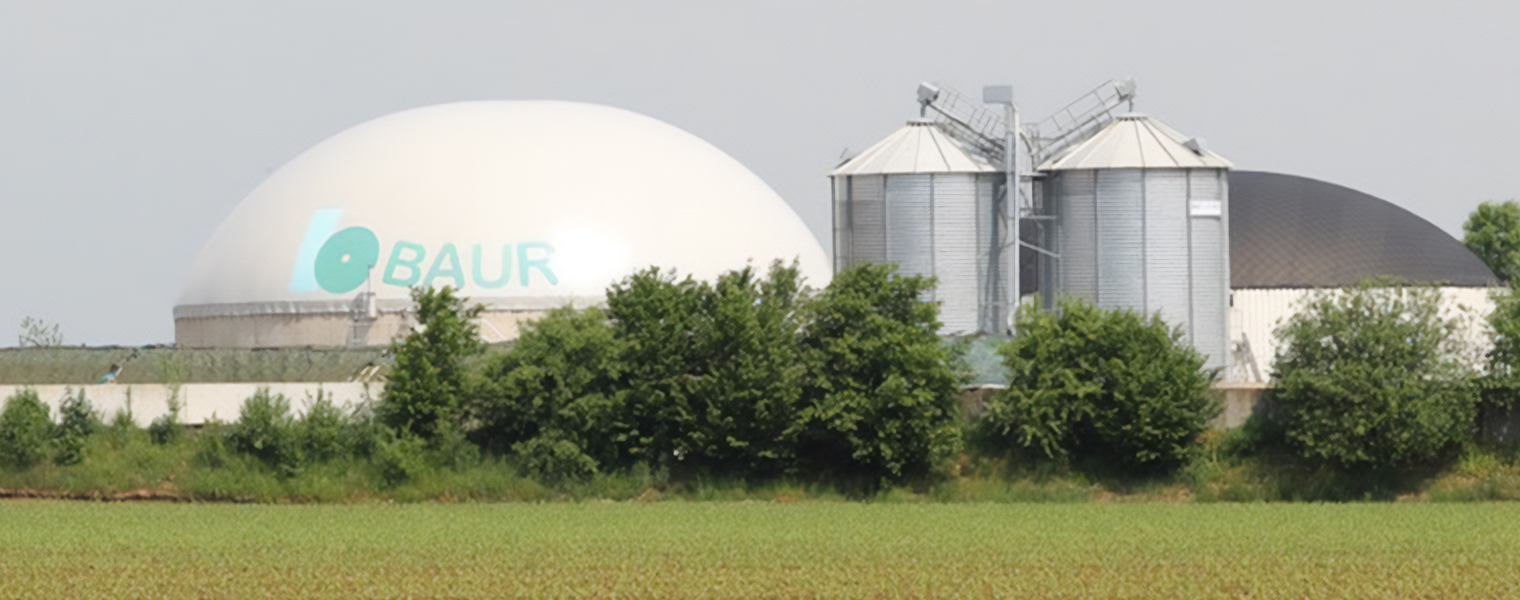
The shape and colour of the gas storage covers can be customised to meet specific requirements and customer preferences.
Our team of experienced consultants from Cress Consulting, a division of The Hydroflux Group are committed to uncovering opportunities for sustainable growth.
These include:
![]()
Climate resilience:
We assess climate risks and determine climate adaptation responses to strengthen your resort’s resilience to a changing climate.
Water stewardship:
We help resorts adopt effective water stewardship practices, identify risks and opportunities and support collaboration to address shared water challenges.
Sustainability Strategy:
We work closely with resorts to assess current practices, identify opportunities to enhance sustainable tourism, design and implement a comprehensive sustainability strategy
ESG reporting:
Our team conducts a thorough assessment of your resort’s sustainability practices, identifying areas for improvement and developing an ESG strategy to maximise positive impact and enhance transparency.
Carbon accounting and emissions reduction:
Our team helps resorts measure, manage, and reduce greenhouse gas emissions. We conduct carbon assessments, develop emission reduction plan, and support the implementation of a roadmap to enhance the transition to net zero.
Our expertise and comprehensive solutions will help you secure a resilient, sustainable future.
For more information, please visit cress.au
Hydroflux Pacific, as a leading company specializing in construction and project management in the wastewater sector, is well-positioned to provide comprehensive services to municipalities in the Pacific region. With our extensive expertise and experience, we offer tailored solutions to meet the specific needs and challenges of wastewater treatment projects.

At Hydroflux Pacific, we excel in construction management, overseeing the entire construction process from initial planning and design to project execution and completion. We ensure that all construction activities adhere to industry standards, regulations, and best practices, prioritizing the safety, quality, and efficiency of the wastewater infrastructure being built. Our experienced team manages every aspect of the construction phase, providing municipalities with confidence in the successful implementation of their wastewater projects.
In addition to construction management, we offer effective project management services. Our skilled project managers possess the knowledge and experience to handle the complexities of wastewater treatment projects, including budgeting, scheduling, procurement, and resource allocation. We employ robust project management techniques to ensure projects are executed on time, within budget, and to the highest standards. With our expertise, we navigate any unforeseen challenges or changes that may arise, minimizing disruptions and maximizing project success for municipalities.
Hydroflux Pacific also provides value-added services such as feasibility studies and technology evaluation. We assess the unique needs and requirements of municipalities and conduct thorough evaluations of wastewater treatment technologies. Based on cost-effectiveness, efficiency, and environmental sustainability, we provide expert recommendations, enabling municipalities to make informed decisions about their wastewater infrastructure investments. This ensures that municipalities can implement the most suitable and sustainable solutions for their specific circumstances.
Furthermore, at Hydroflux Pacific, we prioritise strong partnerships and collaboration with municipalities throughout the project lifecycle. We recognize the importance of stakeholder involvement and community engagement, actively communicating with all parties involved. By fostering transparent and open communication, we ensure that municipalities have a clear understanding of project progress, milestones, and any potential impacts. This collaborative approach builds trust and ensures that projects align with the unique needs and goals of the municipalities we serve.
By leveraging our expertise in construction and project management, Hydroflux Pacific empowers municipalities in the Pacific region to develop sustainable wastewater treatment solutions. Our commitment to excellence, coupled with our comprehensive services, allows municipalities to enhance their wastewater infrastructure, protect public health, preserve the environment, and promote the well-being of their communities.
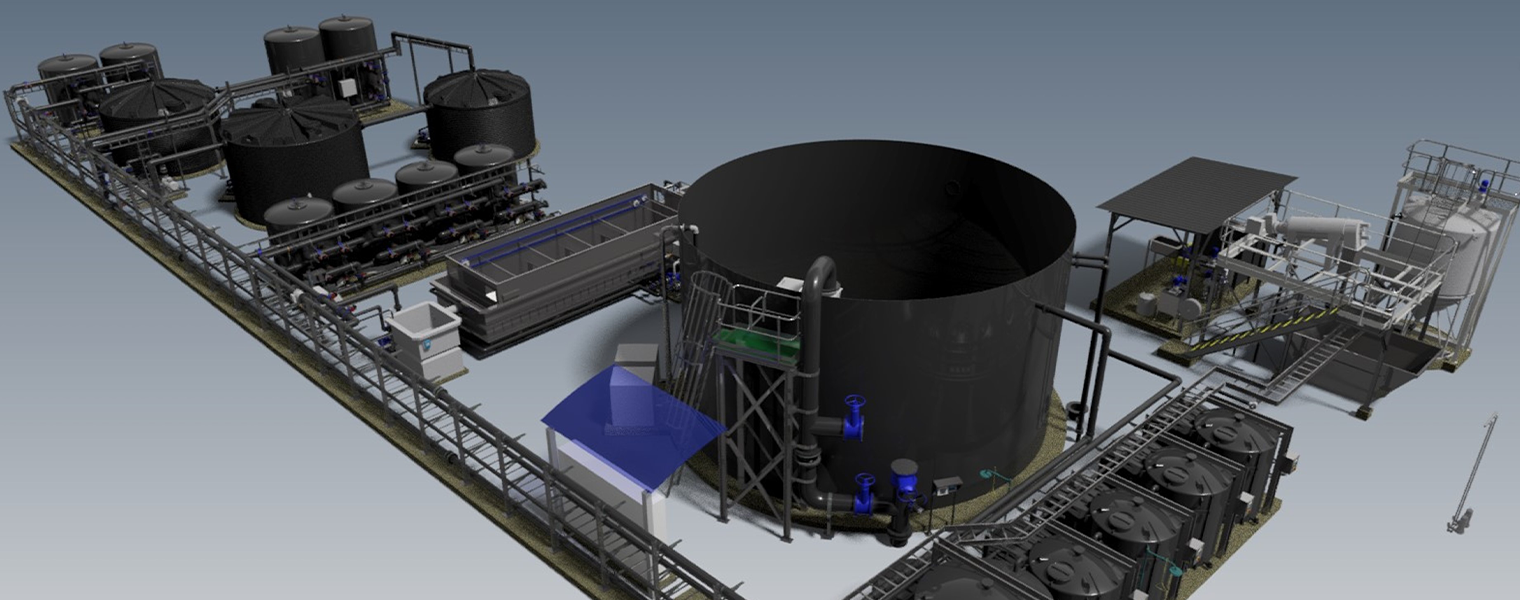
Hydroflux recognizes the importance of local support in wastewater systems in the Pacific region and actively incorporates it into our approach. From our Suva offices and utilizing support from our head office,we collaborate with local communities, governments, and stakeholders throughout the project lifecycle, fostering open and transparent communication channels. We value local perspectives, concerns, and aspirations, ensuring that the design and implementation of wastewater systems are aligned with local needs and preferences.
We acknowledge and respect the cultural diversity of the Pacific islands. We work closely with local communities to understand their cultural values, practices, and sensitivities regarding water and wastewater management. This cultural sensitivity is incorporated into the design, operation, and maintenance of wastewater systems, ensuring that they are culturally relevant and acceptable. We value local knowledge and collaborate with communities to adapt technologies and approaches to suit the specific cultural context.
We believe in the transfer of technology and knowledge to the local communities. We facilitate the exchange of expertise by providing training on the operation and maintenance of wastewater systems. Additionally, we ensure that the technologies and solutions implemented are accessible and suitable for the local context. This transfer of technology empowers local communities to take ownership of the systems and enhances their ability to address challenges independently.
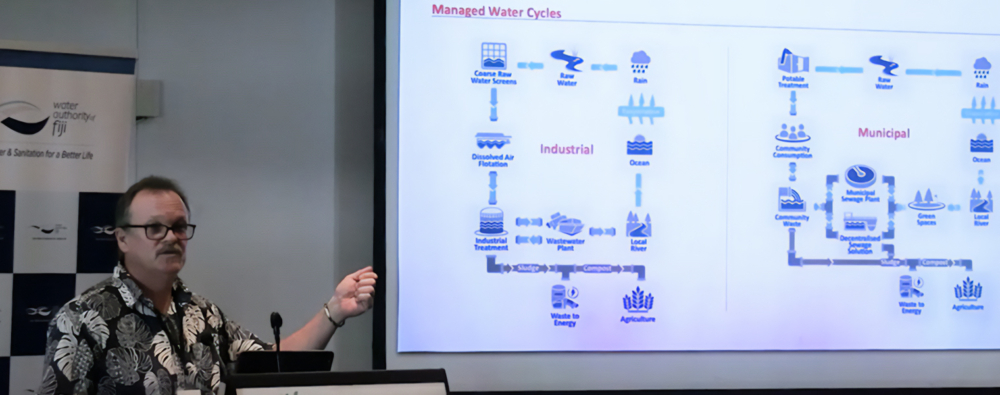
We place a strong emphasis on environmental conservation and social responsibility. We work closely with local communities to raise awareness about the importance of proper wastewater management and its impact on public health and the environment. By fostering environmental stewardship and promoting sustainable practices, we help communities understand the value of preserving their natural surroundings and protecting water resources.
Through our collaborative and culturally sensitive approach, capacity building efforts, technology transfer, and environmental and social responsibility initiatives, we actively contribute to building local support for wastewater systems in the Pacific region. By engaging with local communities, we ensure that the systems are tailored to their needs, supported by local knowledge, and embraced by the communities we serve. This commitment to local support helps foster the long-term success and sustainability of wastewater management in the Pacific.
One of the core priorities of the Hydroflux Group is to build long term relationships with their water, wastewater and sludge dewatering customers. For businesses operating wastewater treatment or sludge dewatering plants, it is important that the plant operates reliably and meets its performance expectations at all times.
Our Hydroflux Utilities Company specialises in providing the expert specialist assistance to keep your Hydroflux plant operating.
|
For spare parts, Please Call |
For technical assistance Please Call |
For chemicals –coagulants, polymers, Please Call |
